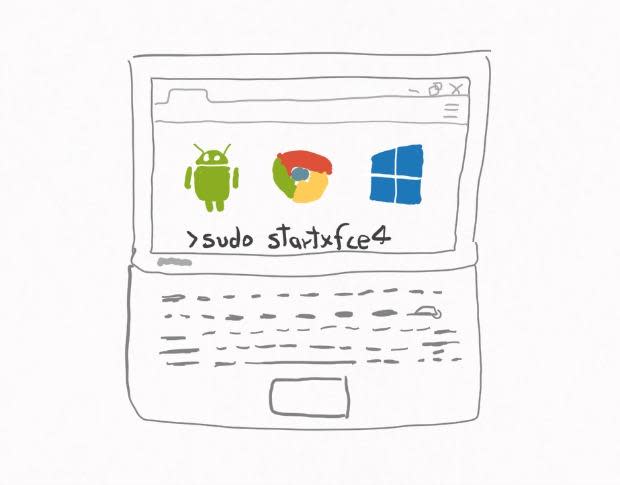How to run more than web apps from a Chromebook

If you use a Chromebook, you may still want to use software built for another operating system, such as Windows, Mac OS X, or Linux. Good news: you can, but you may need additional hardware -- or a subscription to a service -- to do so. Here are a few options.
Chrome Remote Desktop
Run apps on systems you control -- or support.
Chrome Remote Desktop allows remote access from your Chromebook to a Mac, Windows, or Linux system that also has Chrome installed. Once connected, you may configure the system and run most apps remotely. And, as of March 2015, the latest version of Chrome OS supports remote connections to -- not just from -- a Chromebook.
You choose whether to make your system always available or shared on request. Configure "always available" access only on systems you fully control. To login to an "always available" system, login to Chrome with the same Google Account as on your remote system for access. Otherwise, start the Chrome Remote Desktop app and create an access code to gain remote access for a single session.
To set up Chrome Remote Desktop, install the Chrome browser, then install the Chrome Remote Desktop app. Follow Google's instructions to configure remote access. Mobile Chrome Remote Desktop apps also allow you to remotely access a system from iOS and Android devices.
rollApp
Subscription access to Linux apps in your browser.
rollApp offers access to hosted Linux apps in your browser. The selection includes prominent apps, such as the LibreOffice and OpenOffice suites, Scribus (desktop publishing), GIMP (image editor), Inkscape (graphics), Freemind (mindmap), and Dia (diagrams). The apps work in Chrome, plus Android and iOS devices.
With a premium upgrade ($6.99/monthly or $71.88/annually), you may save files you create with the apps to Google Drive, Box, Dropbox, OneDrive, and other connected cloud storage services (Figure A).
Figure A

With rollApp premium, run Linux apps in your browser and save your files to Google Drive.
Crouton
Run Linux apps on your Chromebook.
On some Chromebooks, you may install Linux with a set of scripts known as Crouton ("Chromium OS Universal Chroot Environment"). You have to put the device into developer mode.
After you complete the setup, you may then install and run Linux apps, such as LibreOffice and OpenOffice. However, unlike rollApp, neither LibreOffice or OpenOffice save files directly to Google Drive (or other cloud services); you'll need to upload the files with a browser. Linux also supports Wine ("wine is not an emulator"), which run many -- although not all -- Windows apps.
Mainframe2
Remotely install and run your Windows apps in your browser.
Mainframe2 works much like rollApp, but for your own Windows applications. Login, startup a "sandbox" environment, then install Windows applications. If you're an administrator, you control the Windows and web apps available to people in your Mainframe2 team.
Each application displays as an easy-to-click icon on the "Applications" page. For files, Mainframe2 connects to Dropbox, with Google Drive support promoted as "coming soon." Connected storage displays much like a mapped network drive in Windows.
Mainframe2 offers a clean interface and a relatively straightforward way to provide access to Windows apps to people who use Chromebooks (Figure B). Mainframe2 launched in February 2015 for the educational market, with the intent to serve other markets in the future.
Figure B

Install and run Windows apps from a browser with Mainframe2.
Other remote desktop solutions
A large organization might prefer to use traditional remote desktop tools, such as those offered by VMWare, Ericom, or 2X by Parallels. These provide access to Windows desktop applications from either a Chrome web app or within the browser. Such setups provide more organizational control and require more configuration and setup than the above solutions.
In an earlier post, I suggested that when the web is enough, a Chromebook is enough. Google challenges that assertion, as the company touts support for Android apps -- such as Evernote, Clarisketch, and Vine -- that run on Chromebooks. With Android apps and the options above, a more accurate assertion might be that a Chromebook browser brings access to web apps... and more.

 Yahoo Finance
Yahoo Finance 
